Technical Information
Tv Bracket Selection
When choosing a Bracket for a TV there are a few things that need to be considered:
- The weight of the TV.
- The location of the VESA mounting holes at the back of the TV.
- The dimensions of the VESA mounting holes at the back of the TV.
- If the wall is Brick, plaster or has metal studs.
- If the TV needs to be Ceiling mounted, on a swivel or just a standard wall mount.
The TV Manual will specify the weight of the TV without the stands and also have the Video Electronics Standards Association (VESA) information by showing a picture with two numbers like 400 x 200 for example or it will specify the sizes. The numbers shown are measured 'horizontal distance x vertical distance. All our TV brackets have a VESA guide at the back of the packaging showing the different configurations the bracket will be suitable for.
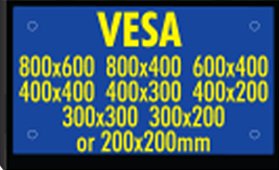
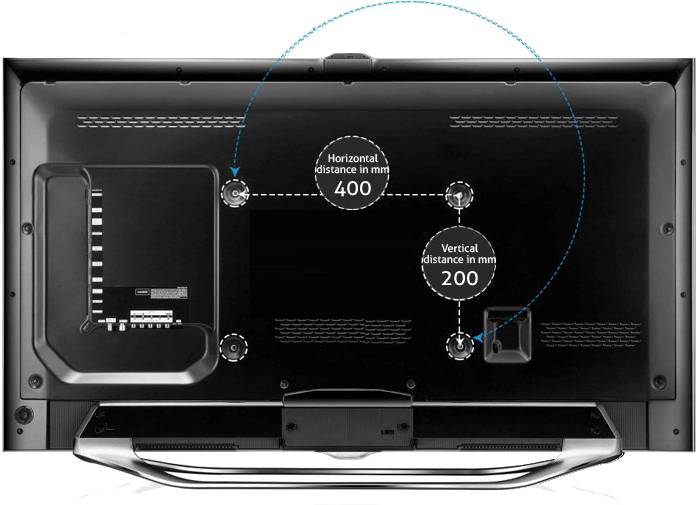
Return Loss = VSWR
- Antenna systems work best when the impedance is the same at all points in the system.
- Impedance variations introduce signal reflections that reduce the efficiency of the distribution system.
- This reflected signal meets the signal traveling in the opposite direction, causing standing waves.
- Measured standing waves are known as Return Loss. It is the same as Voltage Standing Wave Ratio, abbreviated to V.S.W.R., or S.W.R.
Typical Coaxial Cable Losses dB Per 100m

Return Loss = VSWR Table

- Poor Return Loss reduces signal quality and can be caused by any component in the distribution system.
- An ideal V.S.W.R. is 1:1 where no power is reflected, but this is seldom attained. In practice 1.5:1 is more common, with 2:1 an acceptable limit.
- Return Loss or VSWR is an important factor in delivering Digital TV with the least possible reduction in Signal Quality between the Antenna and the Wall Socket.
Level Conversion Table at 75 Ohms
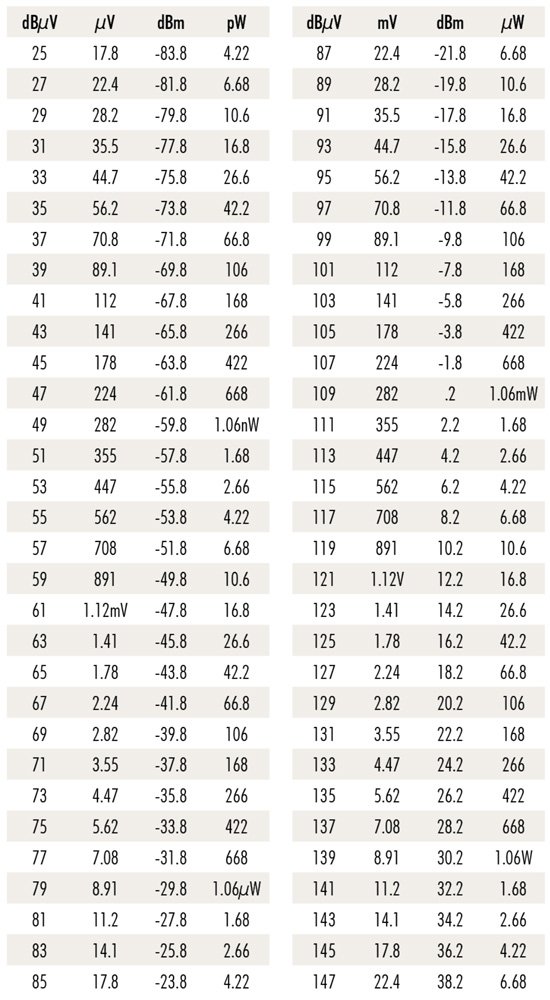
Amplifier Maximum Output and Rule Guide
- As more Channels are amplified, an amplifier's maximum output level must be reduced to stop intermodulation products from reducing signal quality.
- Broadband amplifiers are usually rated for maximum output with 2 equal Channels of say 108dBμV.
- This is the figure to reduce according to the number of TV Channels being amplified. Count 88μ-108MHz band 2 F.M.
- Radio as 1 Channel unless it is 10dB or more below the TV levels.

Example:
- Using an amplifier with a manufacturer's maximum output rating of 108dBμV when amplifying 8 equal Channels, the second amplifier should have its maximum output level calculated 108 -(6+3) = 99dBμV.
- The noise an amplifier generates adds to the total noise in a system, so the max.
- Output level must be further reduced according to the number of amplifiers being used.
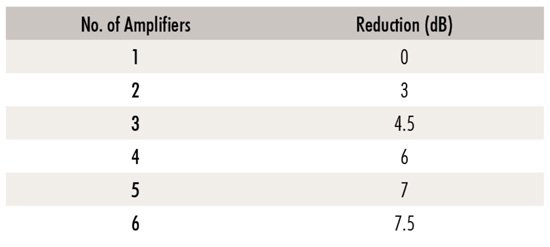
Distance to Fault in a 75 Ohm Network

TAPS or SPLITTERS?
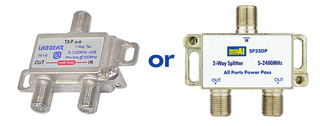
Are Taps better than Splitters?
- Taps give greater control over signal levels and higher isolation, depending on where what values are fitted.
- Quality Splitters can be used to create effective and simple TV signal distribution Networks.
- Combining Taps with Splitters in your Networks can achieve even greater isolation and better signal level balance.
WHY FRACARRO?
Fracarro K Series
- Fully compatible with Digital Terrestrial Television (DTT)
- Easy installation and maintenance
- Flexibility in unit/headend composition
- Standard DIN bar fixing and solid mechanical structure
- All modules use F Connectors
- Quick fit interconnection bridges for RF Connections
- Easily programmable using TPE Programmer (KCPN—optional)
- Less than 1dB Insertion Loss per Input and Output.
Fracarro Fibre Optic
- Suitable for TV and Satellite applications
- Electrical isolation between equipment for optimal performance
- Low signal loss over long distances
- Installation problems and signal quality degradation
- reduced as line amplifiers not required
- Large bandwidth ideal for Digital distribution
- Excellent linearity, well above Coaxial standards
- Pre-terminated cables eliminate splicing costs
- Resistant to water and humidity
- Broadband access in fibre is also available
- Immune to electromagnetic interference
- Can be laid with electrical cable in power lines
- Allow you to create customised interactive Networks due to return path modules
Understanding CCTV Focal Length and Field of View
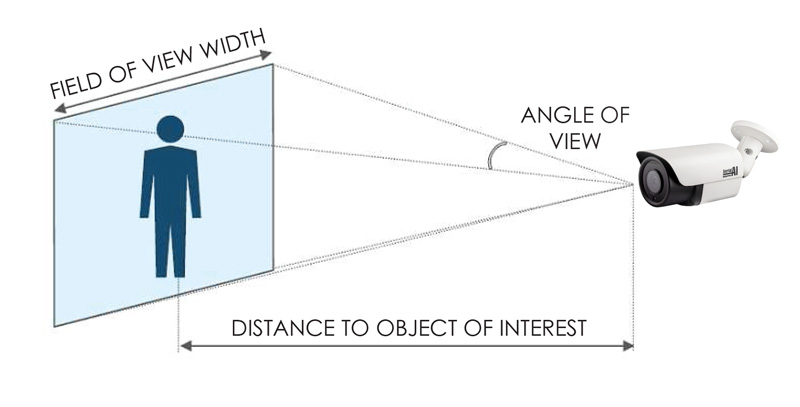
- CCTV lenses are divided into either fixed or variable focus categories.
- Fixed lenses have a specific, non-adjustable focal length such as 2.8mm, 3.6mm right up to 70mm.
- Varifocal cameras have a focusable zoom range for example from 2.8–12mm, 9–22mm, or even 6–50mm.
- It is important to remember that the smaller the number - the wider the field of view. Using this chart to ascertain the required focal length is vital in capturing the image you want.
- Working out what your required field of view is and the distance from the camera, you can then select the correct focal length.
- Looking at the chart below, you can see that a 2.8mm camera has an angle of view of 81.2° at the lens, and at a distance of 5m from the camera, you will have a field of view that covers an area of 8.6m wide by 8.6m high.
- At the other end of the spectrum, a 40mm lens has a 6.9° angle of view at the lens and at the same 5m away from the camera, a field of view that is only 0.6m wide by 0.6m high.
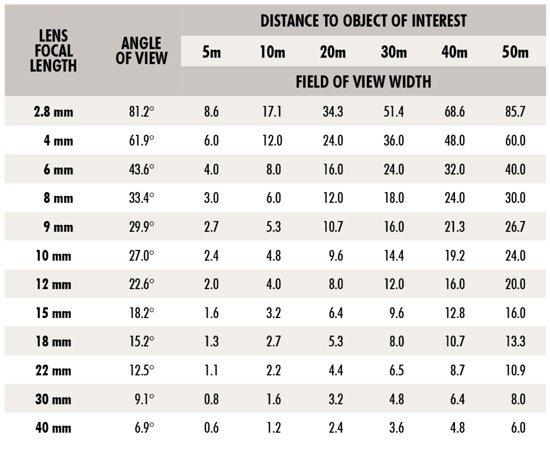
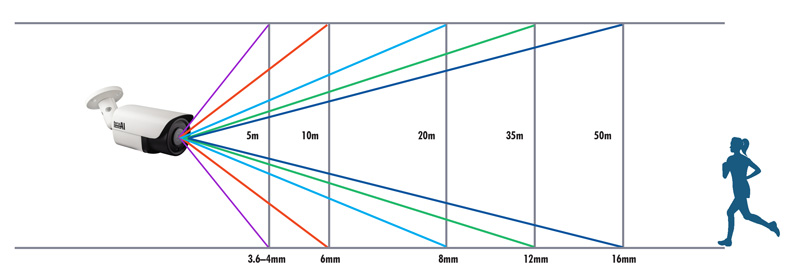
Information for Professional AV Installers and Electrical Wholesalers Australia | Page Updated: September 2023



